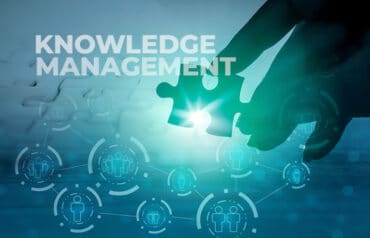Last Friday, we shared our favorite five impressions of ABA TECHSHOW, the ABA Law Practice Management Section’s annual legal technology conference and expo, which was held last week in Chicago. Today, we asked a few friends who attended ABA TECHSHOW to share their impressions. Just like the show, they’re chock full of tips, tricks, perspective and challenges.
Sharon Nelson: E-Discovery Education Gap
The time flies during ABA TECHSHOW, and we are always on information overload afterward. The constant? The continuing interest and need for e-discovery education for lawyers.
- Litigation holds. One question we were asked to bring to our faculty colleagues involved the extent to which attorneys understand litigation holds and their requisite duties. We asked that question of Browning Marean, who shared a story about a recent presentation he had given to 150 litigators. He gave them a hypothesis: They had just received a letter stating intent to sue their client. How many would immediately issue a litigation hold? Only two hands went up. We conclude from that, and our own experience, that litigation holds (and when they are triggered) are very poorly understood—five years after the new federal rules went into effect.
- Meet and confer. Another question involved the meet and confer required under the rules. Wisely, our friend and colleague Craig Ball said the meet and confer should not be understood simply as a meeting, but as a process. Necessarily, there will be continuing discussions as the facts in a case evolve. Mind you, in the states, it is often true that meet and confers are less formal and may consist of a compilation of phone calls and e-mails. But if you’re in state court, make sure you know the rules for your state, because many states have adopted mutant versions of the federal rules.
- Form of production. The understanding of “form of production” is no better. David Chaumette and Judge David Waxse told the story of two parties who shared with the judge that they had agreed on the form of production—they were going to produce on a CD. When asked what they proposed to put on the CD, they replied that they hadn’t figured that out yet. In another case, Judge Waxse asked the parties why they were producing ESI in paper since it would be so difficult to review. But … ah! … they had the ready answer. They were going to scan and OCR the paper so it would be searchable. Oh my.
Sharon D. Nelson is President of Sensei Enterprises, Inc., a computer forensics, legal technology and information security firm based in Fairfax, VA, and a Past Chair of ABA TECHSHOW. She blogs on electronic evidence at the award-winning Ride the Lightning.
Carey Ransom: Cloudy Skies Over ABA TECHSHOW
Everywhere I went during ABA TECHSHOW, “the cloud” seemed to dominate the conversations. Whether talking to solo and small firm attorneys and administrators about their wish lists and priorities, or to exhibitors and conference luminaries, discussions around how and why to use the cloud were prevalent. It was interesting to see that some lawyers use the cloud through applications like Gmail and Westlaw, yet think more about the applications than the infrastructure.
Both faculty and vendors worked hard to educate attendees about what the cloud is and why it is important today, and the educational track on cloud computing was well-attended and comprehensive. Key issues such as security, privacy and data ownership were openly discussed, vendors and users are working together to address concerns and ethics guidelines. Clio, with its added collaboration features, and RealPractice, with its iPhone and iPad client development and practice management app, are just a couple of examples of cloud-based vendors adding capabilities to help users work even more effectively. Even long-time legal technology vendors such as World Software are getting in the game with software-as-a-service add-ons to their application, enabling easier, anytime access to their system.
While on Monday the cloudy Chicago skies provided the appropriate backdrop for such discussions, the clouds parted on Tuesday to bring a beautiful spring day and the energy and excitement that the cloud is here to stay—a critical component of how lawyers will manage their practices going forward.
Carey Ransom is an experienced Internet marketer and software entrepreneur and executive, and is currently CEO of RealPractice, a leading cloud-based client development and practice management software platform. He is a frequent speaker, legal technology expert and an active blogger. Follow him @ransomthoughts.
Donna Seyle: The Challenge of “Code is Law”
Not all conferences such as ABA TECHSHOW have the same level of camaraderie and sense of purpose. Presenters and other legal tech luminaries were frequently available for spontaneous conversation, and there was a general sense of participation among the attendees themselves. In other words, good feelings abounded!
Which has made me wonder how many of us stopped to consider the implications of Larry Lessig’s keynote address: “Code is Law: Does Anyone Get This Yet?” Lessig is Director of the Edmond J. Safra Center for Ethics and a Professor of Law at Harvard Law School. He has been tracking the relationship between law and the Internet for many years, coming to the fairly radical conclusion that in order to win real net neutrality, we must cut off the dependence of politicians on campaign contributions. Whoa! Let’s back up the recording and hear that again!
In one hour, Lessig took us through a fascinating analysis of the evolution of the Internet and its regulation through law, norms, architecture and the marketplace. Asking the question, what is the mix of modalities that works best to positively influence digital creativity and development, Lessig also pointed out that “law affects things that regulate”, i.e., norms, the market and code. As a result, it has been presumed that the best path is to enable law to regulate architecture (or code) directly, and the copyright office is left to decipher whether such things as “mashups” are original works of art. This, Lessig says, is a mistake.
Changing direction, however, is not an easy task. Such matters are in the hands of our political institutions, whom Lessig says he now realizes concern themselves less with the good of “the people,” and instead act based on the desires of their “funders,” the top 10 percent campaign contributors. If we don’t fix this, he says, “We will fix nothing about our society.”
Lessig closed with a quote from Henry David Thoreau: “There are a thousand hacking at the branches of evil to one who is hacking at the root.” In view of that, Lessig has created Rootstrikers, a network to fight against corruption in government. I’m not sure this is the task conference attendees anticipated being charged with. But there it is nonetheless. Did we get it?
Donna Seyle is founder of Law Practice Strategy, a coaching and training service and resource for lawyers seeking to establish a solo or small firm or wanting to take their existing practices into the 21st Century. She blogs at Law Practice Strategy Blog.
Joan Feldman: Website Marketing Tips
Website marketing seems overrun with wannabe experts. That’s why watching Steve Matthews and Bob Ambrogi in action last week at ABA TECHSHOW was a true pleasure. These guys know this stuff cold. (Disclosure: Steve and Bob are Attorney at Work Advisors, so we’re pretty familiar with their credentials.) The two reinforced the basics of SEO and good web marketing strategy, and here are a few random takeways:
- Claim your Google Places account. Local search is a huge deal, especially with Google’s new way of sorting out search results and page rankings. If you don’t claim your Google Places account, you could get bumped way down in Google search results—even off the page. To protect your page rank, you want to get listed in as many directories as possible: Yahoo Maps, YellowPages.com, Citysearch, Yelp, Bing, DexKnows.com, Avvo, Justia and Martindale-Hubbell.
- Create a firm style guide. You don’t have to reproduce your own version of the AP Stylebook, but somebody in your firm should know how to use it. You also need simple-to-follow usage guidelines specific to your firm. For example, how should the firm’s name be used? Are abbreviations or shortened forms acceptable, and when? Are surnames used? Do phone numbers use hyphens, dots or parens? A foolish consistency may be the hobgoblin of little minds, but consistency in firm style keeps you from looking sloppy and unprofessional. Nobody wants to hire a sloppy lawyer.
- Add a press room. This page on your site serves as a one-stop shop for journalists, or anyone who wants the big-picture details on your firm. You should post press releases, contact information, a list of firm experts available for comment, and a brief history of the firm, including date founded and the founding partners. If you have a firm blog or news feed, include that here, too. And always make sure your RSS feed is easy to find!
- Don’t stop with a website. Given all the social sites that let you create pages, some people ask if you even need a website these days. The answer is still yes, unless you are a solo (maybe). That said, you still need to be smart about how you use social networks to raise your visibility and keep visitors coming back to your site, where they learn all about your services. The number one way to raise visibility is to have a blog. But Twitter, while not for everyone, can also be an extremely powerful way to bring traffic to your site.
- They come back for content. When you tweet, say something useful, something noticeable, and link back to content on your own website, whether an article or podcast or report. That way, you’ll be the one who is retweeted and referred. While linking to or retweeting other people’s stuff is fine to a point (especially that cute penguin video), you really want to bring people back to your own site. Otherwise, it’s just about other people. On that note, publish your original stuff on firm-owned property—your own website—first, instead of one of the legal publishing repositories. That way, the links brings people back to your site.
Joan Feldman is an editor and writer specializing in law practice management topics. Her firm, Feldcomm, creates publications, marketing communications and websites, including Attorney at Work.





















